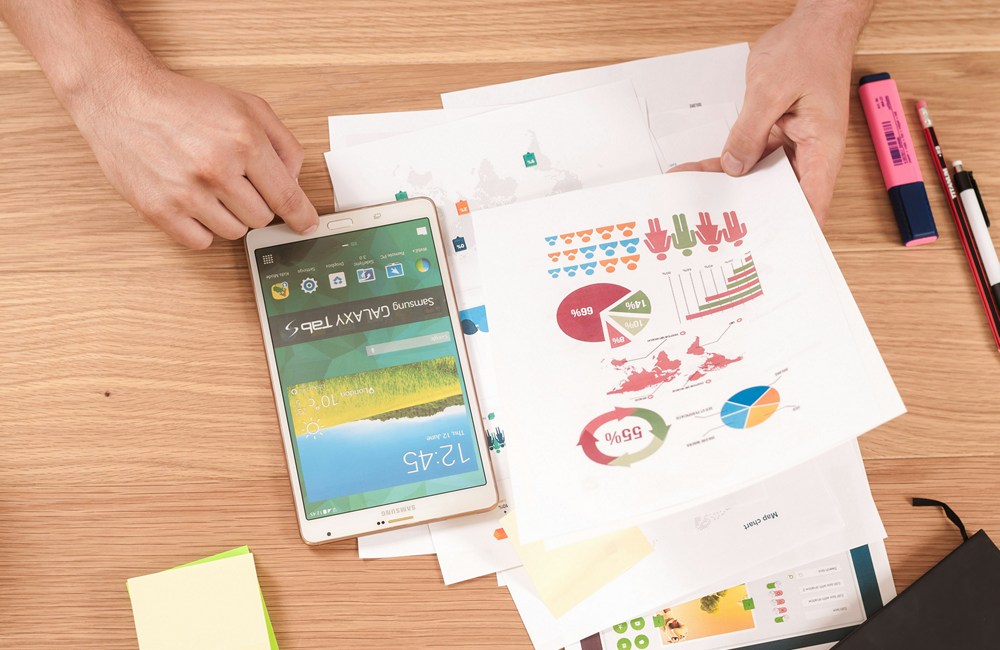Restaurant sales forecasting helps you better manage your inventory and goods so that you know exactly what items you need to stock up on and which are running low. But you can also use these calculations to help you:
- Predict future sales
- Plan for cash influxes or shortages
If you have insights into your future sales, it opens the door to streamlined operations and better management of your eatery.
We're going to examine what forecasting involves and the formula that you’ll use to run your own calculations.

What is Restaurant Forecasting?
Restaurant forecasting is simple: it’s the process of predicting the demand your restaurant will have for a given period of time. For example, you might perform a forecast for the third quarter of the year to help you predict:
- Revenue
- Scheduling needs
- Employee needs
And if you use software, it can further help you with sales at a restaurant. Software will perform all of the number crunching and can:
- Run traditional forecasts
- Run intelligent forecasts
An intelligent forecast is one that is powered by AI and big data to analyze previous trends and help you determine your sales for a specific period of time. Software will integrate with some of your existing technology, such as your scheduling software, point-of-sale systems, reservation platforms and more.
Owners and managers can better utilize forecasting to help their companies grow with precision. If you know that the upcoming period is going to be slower, you’ll have the opportunity to reduce staff or find alternative financing options to keep operations running smoothly.
Making Sense of the Forecasting Sales Formula
You'll find many calculations for forecasting, but one that is most common is:
- (number of predicted meals * average order value)
If you sell drinks, such as alcohol, you’ll then want to use a similar forecasting sales formula to add in the drinks, such as (number of drinks sold * average drink cost per meal) and then add it to the previous total.
How do you derive this information?
You'll need to extract it from historic sales. If you’re in your first year of business, it can be challenging to know what your sales will be because you don’t know when the seasonal rush will begin.
But if you have past data that you can analyze, you’ll then be able to consider things, such as:
- Sales growth
- Seasonal fluctuations
- Market conditions
Software really shines for forecasts because it will be able to pinpoint variables that will influence your total sales, such as up or down periods.
Conducting Your First Restaurant Sales Forecast
If you want to conduct your first forecast, we recommend considering the following data:
- Baseline daily sales. This is how many sales that you receive per day. You can also consider weekly average sales, if they remain steady throughout the year.
- Number of visitors that you receive per day.
- Additional item purchases, such as how many people order drinks or a souvenir from your restaurant, which will pad your sales total.
For example, let’s assume that your daily sales average $1,200. You can then multiply this figure by the number of days that you’re open per week to forecast your weekly sales. You can add in as many variables as you wish. For example, maybe you’ve had a 10% growth in sales in the past year, so you’ll account for this in your calculations.
Ideally, you’ll have three forecasts:
- Low
- Average
- High
Often, your sales will fall within this range. Forecasting is a tool that eateries can use to predict sales for a given period, but they’re not to be trusted with 100% accuracy because they will often be “around” the average.

What are the Benefits of Using Restaurant Forecasting Software?
Restaurant forecasting software is well worth the investment and offers a number of benefits, including:
Higher Profits
Restaurants have slim profit margins as-is, so there’s little room for waste. One unforeseen event can easily push you into the red.
Forecasting software will help you predict your needs and use real data to create a more accurate picture of what lies ahead.
With the right solution, you no longer have to worry about operating blindly or guessing what your needs will be in the next month or quarter.
Forecasting will help you understand your slow periods and when to spend more on marketing to overcome seasonal lulls. Having a peek into the future will help you maintain your margin throughout the year.
Better Customer Experience
With the help of sales forecasting software, you can anticipate how many customers you’ll serve on any given day. If you’re prepared for a busier weekend or weeknight, you’ll create a better overall customer experience.
Otherwise, you risk:
- Not having enough supplies
- Not having enough staff
- Having long wait times and slow service
- Overworking your staff
Forecasting allows you to allocate your resources properly and prepare for highs and lows.
Optimized Labor Scheduling
Along with allocating your resources properly, sales forecasting will help you optimize your labor scheduling. When you can anticipate your sales, you can build your labor schedule around customer demand.
If you know that Saturday is your busiest day, you can ensure that you have enough staff on the schedule to meet customer demand. On slower days, you can keep scheduling light and keep your labor costs in check.
Anticipating seasonal variations and average daily customer turnover will allow you to avoid issues with understaffing or overstaffing.
Data-Backed Decisions
There are many advantages to sales forecasting, but one of the biggest benefits is being able to make data-backed decisions. Accurate revenue projections will help you make better decisions over the long-term.
For example, your sales forecasts may indicate that demand is so high, you can easily open a new location. Or you may have enough cash to invest in a piece of equipment to boost production.
On the other hand, your forecasts may indicate that you’re facing a slow period and may want to hold off on your plans for another six months.
Smarter, More Optimized Ordering
When you have accurate sales forecasts, you can order inventory based on what you’re going to sell. Historical data can provide a rough idea of the volume of ingredients you’ll need, but sales forecasts will give you a more accurate picture of your sales so that you can better anticipate your needs.
Final Thoughts
Restaurant sales forecasting will help you better manage your inventory, improve your labor scheduling and create a better overall customer experience. The key is to use the most up to date data to ensure that your forecasts are accurate and reliable.


